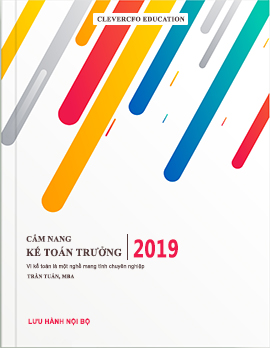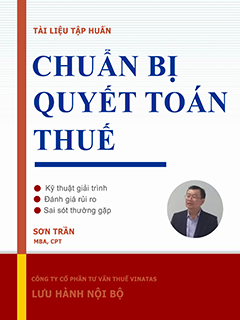Accounting Dictionary – 16 - CAP
C.A. is sometimes used to identify the Chief Accountant
CAGR see COMPOUND ANNUAL GROWTH RATE.
CALL can be 1. process of redeeming a bond or preferred stock issue before its normal maturity. A security with a call provision typically is issued at an interest rate higher than one without a call provision. Investors look at yield-to-call rather than yield-to-maturity; 2. right to buy 100 shares of stock at a specified price within a specified period; or, 3. option to buy (call) an asset at a specified price within a specified period.
CALLABLE BOND is a bond the issuer has the right to pay off at issuer's discretion.
CALL PREMIUM is a premium in price above the par value of a bond or share of preferred stock that must be paid to holders to redeem the bond or share of preferred stock before its scheduled maturity date.
C&C can mean: Cash and Carry or Collection & Classification.
C&F (COST & FREIGHT) includes all shipping costs but insurance. Generally used in statement of terms, stating cost and freight are paid by the exporter from his warehouse to a port in the importer's country. In this case, the buyer is responsible for insurance.
C&I (COST & INSURANCE), in a price that is quoted “C&I”, means that the cost of the product and insurance are included in the quoted price. In this case, the cost of shipping would be borne by the buyer.
CANDY DEAL is a slang term that refers to an illegal business practice to inflate revenue/sales numbers by selling product to distributors with a pledge to buy them back later, in addition to providing a percentage kickback to the distributor for assisting in falsifying the sale.
CAPITAL, in economics, can mean: factories, machines, and other man-made inputs into a production process. In finance, capital is money and other property of a corporation or other enterprise used in transacting the business.
CAPITAL ACCOUNT, in finance, is an account of the net value of a business at a specified date; in economics, it is that part of the balance of payments recording a nation's outflow and inflow of financial securities.
CAPITAL ASSET is a long-term asset that is not purchased or sold in the normal course of business. Generally, it includes fixed assets, e.g., land, buildings, furniture, equipment, fixtures and furniture.
CAPITAL BUDGET is the estimated amount planned to be expended for capital items in a given fiscal period. Capital items are fixed assets such as facilities and equipment, the cost of which is normally written off over a number of fiscal periods. The capital budget, however, is limited to the expenditures that will be made within the fiscal year comparable to the related operating budgets.
CAPITAL CONTRIBUTION is cash or property acquired by a corporation from a shareholder without the receipt of additional stock.
CAPITAL EMPLOYED is the value of the assets that contribute to a company's ability to generate revenue, i.e, fixed assets plus current assets minus current liabilities.
CAPITAL EXPENDITURE is the amount used during a particular period to acquire or improve long-term assets such as property, plant or equipment.
CAPITAL FUNDS is the total of capital debentures, if any, capital stock, if any, surplus, undivided profits, unallocated reserves, guaranty fund, and guaranty fund surplus.
CAPITAL GAIN is the excess of selling price over purchase price, which may be given special treatment for tax purposes provided the sale takes place more than a given number of months after purchase.
CAPITAL IMPROVEMENT, in real estate, is any permanent structure or other asset added to a property that adds to its value. In general, it is any value added activity or cost to a long-term or permanent asset that increases its value.
CAPITAL INFUSION often refers to the cross-subsidization of divisions within a firm. When one division is not doing well, it might benefit from an infusion of new funds from the more successful divisions. In the context of venture capital, it can also refer to funds received from a venture capitalist to either get the firm started or to save it from failing due to lack of cash.
CAPITAL INTENSIVE is used to describe industries or sectors of the economy that require large investments in capital assets to produce their goods, such as the automobile industry. These firms require large profit margins and/or low costs of borrowing to survive.
CAPITAL INVESTMENT see CAPITAL EXPENDITURE.
CAPITALIZATION is the statement of capital within the firm - either in the form of money, common stock, long-term debt, or in some combination of all three. It is possible to have too much capital (in which case the firm is overcapitalized) or too little capital (in which case the firm is undercapitalized).
CAPITALIZATION OF MAINTAINABLE EARNINGS is a valuation method; perhaps the most generally accepted method that involves capitalizing the future maintainable earnings by the application of a suitably chosen capitalization rate or multiple. The definition of earnings may be profit after tax ("PAT") or earnings before interest and tax ("EBIT"). This methodology, which in reality is a surrogate for the discounted cash flow method, requires consideration of several factors, including: a. an estimate of future maintainable earnings having regard to historical operating results and forecasts of future earnings; b. determination of an appropriate capitalization rate which will reflect the risks inherent in the business including sensitivity to industry risk factors, growth prospects, the general economic outlook and alternative investment opportunities; and c. a separate assessment of any surplus or unrelated assets and liabilities which are not essential to the continuing earning capacity of the business operations.
C.A. is sometimes used to identify the Chief Accountant
CAGR see COMPOUND ANNUAL GROWTH RATE.
CALL can be 1. process of redeeming a bond or preferred stock issue before its normal maturity. A security with a call provision typically is issued at an interest rate higher than one without a call provision. Investors look at yield-to-call rather than yield-to-maturity; 2. right to buy 100 shares of stock at a specified price within a specified period; or, 3. option to buy (call) an asset at a specified price within a specified period.
CALLABLE BOND is a bond the issuer has the right to pay off at issuer's discretion.
CALL PREMIUM is a premium in price above the par value of a bond or share of preferred stock that must be paid to holders to redeem the bond or share of preferred stock before its scheduled maturity date.
C&C can mean: Cash and Carry or Collection & Classification.
C&F (COST & FREIGHT) includes all shipping costs but insurance. Generally used in statement of terms, stating cost and freight are paid by the exporter from his warehouse to a port in the importer's country. In this case, the buyer is responsible for insurance.
C&I (COST & INSURANCE), in a price that is quoted “C&I”, means that the cost of the product and insurance are included in the quoted price. In this case, the cost of shipping would be borne by the buyer.
CANDY DEAL is a slang term that refers to an illegal business practice to inflate revenue/sales numbers by selling product to distributors with a pledge to buy them back later, in addition to providing a percentage kickback to the distributor for assisting in falsifying the sale.
CAPITAL, in economics, can mean: factories, machines, and other man-made inputs into a production process. In finance, capital is money and other property of a corporation or other enterprise used in transacting the business.
CAPITAL ACCOUNT, in finance, is an account of the net value of a business at a specified date; in economics, it is that part of the balance of payments recording a nation's outflow and inflow of financial securities.
CAPITAL ASSET is a long-term asset that is not purchased or sold in the normal course of business. Generally, it includes fixed assets, e.g., land, buildings, furniture, equipment, fixtures and furniture.
CAPITAL BUDGET is the estimated amount planned to be expended for capital items in a given fiscal period. Capital items are fixed assets such as facilities and equipment, the cost of which is normally written off over a number of fiscal periods. The capital budget, however, is limited to the expenditures that will be made within the fiscal year comparable to the related operating budgets.
CAPITAL CONTRIBUTION is cash or property acquired by a corporation from a shareholder without the receipt of additional stock.
CAPITAL EMPLOYED is the value of the assets that contribute to a company's ability to generate revenue, i.e, fixed assets plus current assets minus current liabilities.
CAPITAL EXPENDITURE is the amount used during a particular period to acquire or improve long-term assets such as property, plant or equipment.
CAPITAL FUNDS is the total of capital debentures, if any, capital stock, if any, surplus, undivided profits, unallocated reserves, guaranty fund, and guaranty fund surplus.
CAPITAL GAIN is the excess of selling price over purchase price, which may be given special treatment for tax purposes provided the sale takes place more than a given number of months after purchase.
CAPITAL IMPROVEMENT, in real estate, is any permanent structure or other asset added to a property that adds to its value. In general, it is any value added activity or cost to a long-term or permanent asset that increases its value.
CAPITAL INFUSION often refers to the cross-subsidization of divisions within a firm. When one division is not doing well, it might benefit from an infusion of new funds from the more successful divisions. In the context of venture capital, it can also refer to funds received from a venture capitalist to either get the firm started or to save it from failing due to lack of cash.
CAPITAL INTENSIVE is used to describe industries or sectors of the economy that require large investments in capital assets to produce their goods, such as the automobile industry. These firms require large profit margins and/or low costs of borrowing to survive.
CAPITAL INVESTMENT see CAPITAL EXPENDITURE.
CAPITALIZATION is the statement of capital within the firm - either in the form of money, common stock, long-term debt, or in some combination of all three. It is possible to have too much capital (in which case the firm is overcapitalized) or too little capital (in which case the firm is undercapitalized).
CAPITALIZATION OF MAINTAINABLE EARNINGS is a valuation method; perhaps the most generally accepted method that involves capitalizing the future maintainable earnings by the application of a suitably chosen capitalization rate or multiple. The definition of earnings may be profit after tax ("PAT") or earnings before interest and tax ("EBIT"). This methodology, which in reality is a surrogate for the discounted cash flow method, requires consideration of several factors, including: a. an estimate of future maintainable earnings having regard to historical operating results and forecasts of future earnings; b. determination of an appropriate capitalization rate which will reflect the risks inherent in the business including sensitivity to industry risk factors, growth prospects, the general economic outlook and alternative investment opportunities; and c. a separate assessment of any surplus or unrelated assets and liabilities which are not essential to the continuing earning capacity of the business operations.









